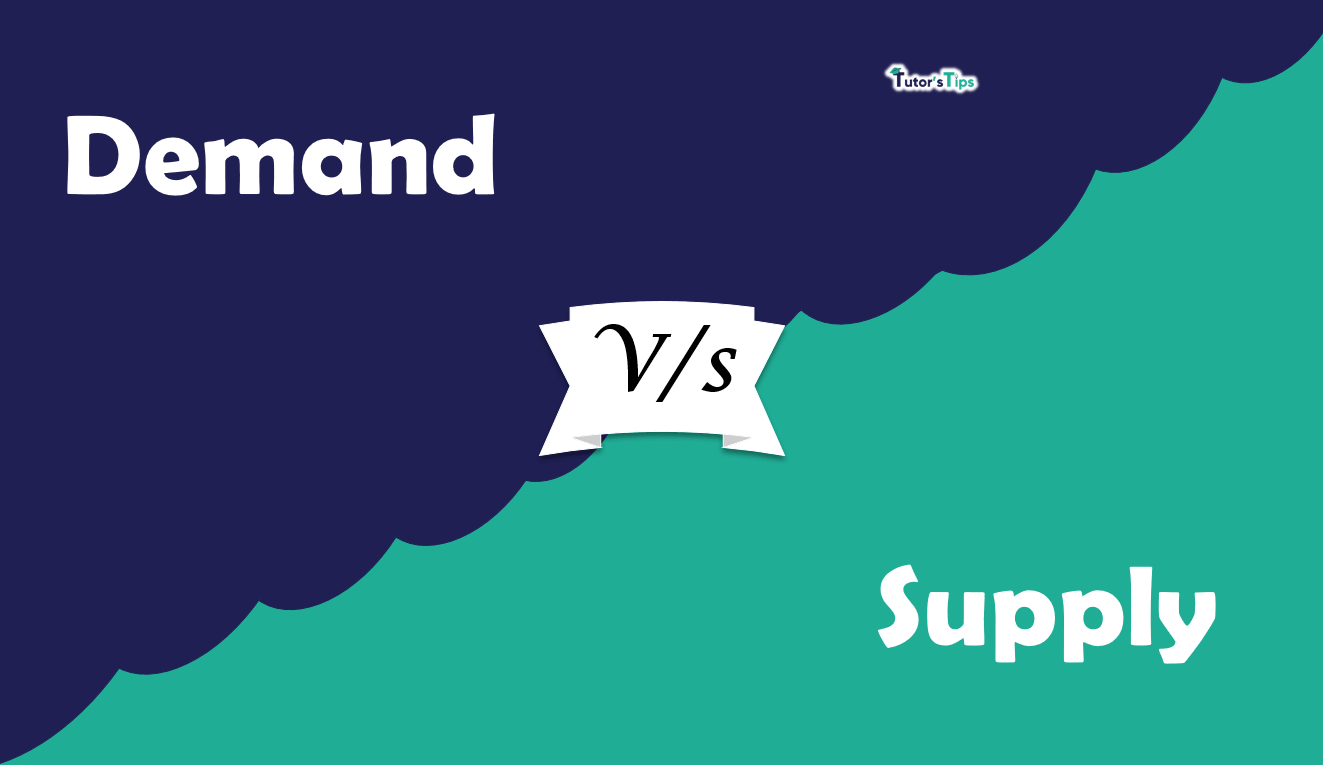The main difference between Demand and Supply is that demand refers to the quantity demanded by the consumer in the market whereas Supply refers to the quantity supplied by the sellers in the market. Both terms are the main driving forces in the market. To understand the difference between these two, first, we have to know the meaning of both terms:
Meaning of Demand :
The demand for the commodity can be described as its quantity at which consumer is willing and able to purchase or consume a given commodity during a given period of time.
So, the commodity can be said as demanded when
- A consumer possesses the willingness to buy it
- Possesses the ability to purchase or consume it
- And it is related to a given period of time.
For example:
Suppose Saurabh wants to purchase a motorbike for himself but he does not have sufficient money to buy it. It cannot be treated as demand. When he can afford the purchase of that motorbike in a given time, it can be called as demand for the motorbike by Saurabh.
Meaning of Supply:
Supply refers to the amount or quantity of a good/ service which the market participants are ready to sell in the market to the consumers at given prices for a given period of time.
A commodity can be said as supplied when
- it is ready to sell in the market but not yet sold.
- it is related to a given period of time.
According to Thomas,
“The supply of goods is the quantity offered for sale in a given market at a given time at various prices.”
Example of the meaning of Supply: –
Advertisement-X
A book Seller has 70 books of Business Economics for class 11th and 80 books of the same subject for class 12th at his shop and he is ready to sell them. So the total supply of the material is equal to 150(70+80) books.
Chart of Difference between Demand and Supply: –
|
Basis of Difference |
Demand |
Supply |
Meaning |
It refers to the quantity demanded by buyers in a given period of time. | It refers to the quantity supplied by sellers in a given period of time. |
Inter-Relationship |
When demand increases, supply tends to decrease and vice versa. | When supply increases, the demand tends to decrease and vice versa. |
Represents |
It represents the willingness of buyers. | Supply represents the willingness of sellers. |
Price Effect |
Quantity demanded increases with a fall in price and vice versa, other things being the same. | It increases with a rise in price and vice-versa, other things being the same. |
Curve |
The demand curve is always downward sloping. | The supply curve is always upward sloping. |
Law |
The Law of demand states that the quantity demanded increases with a fall in price and decreases with a rise in price, other things being constant. | Law of Supply states that quantity supplied increases with a rise in price and decreases with a fall in price, other things being constant. |
Variation Effects |
If demand is more than the supply, there would be a surplus in the market. | If supply is more than demand in the market, there would be a deficit. |
Price Relationship |
It is inversely related to the price. |
It is positively related to the price. |
Expresses |
It expresses the preferences and tastes of the consumer in the market. |
It expresses the stock availability by the seller in the market. |
Download the chart: –
If you want to download the chart please download the following image and PDF file:-


Conclusion: –
Thus, Demand and Supply both are necessary to determine the equilibrium in the market. The firms and the economy have to suffer if there is a disequilibrium situation.
Thanks Please share with your friends
Comment if you have any questions.
Check out Business Economics Books @ Amazon.in
Advertisement-X







Thanks u